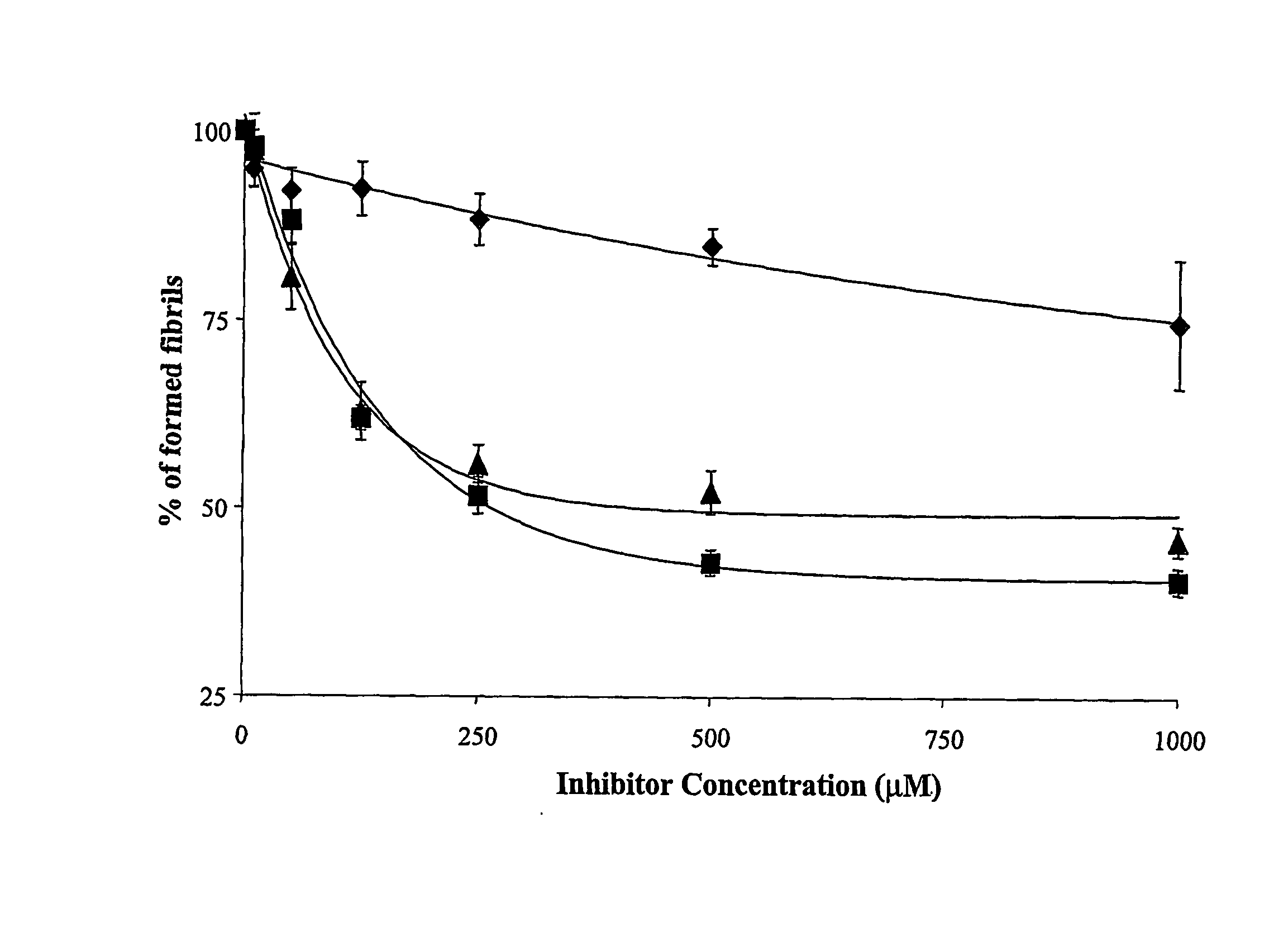Beta-Amyloid Inhibitors and Use Thereof
a technology of beta-amyloid and inhibitor, which is applied in the field of beta-amyloid aggregation inhibitor peptide, can solve the problems of societal cost of managing ad, high cost, and inability to significantly retard the progression of the diseas
- Summary
- Abstract
- Description
- Claims
- Application Information
AI Technical Summary
Benefits of technology
Problems solved by technology
Method used
Image
Examples
example 1
Synthesis of Compounds of the Invention
[0115] Peptides of the invention are synthesized in solid phase by Fmoc chemistry. Peptides were purified by HPLC and purity (>99%) evaluated by peptide sequencing and mass spectrometry (ESI-Ion trap LCQ DecaXP Plus by ThermoFinnigan). Peptides were lyophilized at −20° C. Concentration of the stock solution was estimated by amino acid analysis.
[0116] The molecular weights measured by mass spectrometry are listed in Table I below:
TABLE ISEQ ID No.MW (g / mol)42 245.8 5 636.862865.5
example 2
Biological Assays
[0117] In Vitro Assays of Activity.
[0118] The activity of compounds of the invention in inhibiting the formation of aggregated fibrils can be tested by following the changes in fluorescence signal of a fluorophore that has an affinity for the amyloid fibrils.
[0119] Amyloid formation can be quantitatively evaluated by the fluorescence emission of thioflavine T (ThT) bound to amyloid fibrils, as reported by Levine et al., 1993 and also Soto et al., 1995.
[0120] In this assay, peptides of the invention were solubilized in water at different concentration in small Eppendorff tubes and lyophilized.
[0121] Ab1-42 (a synthetic peptide with the same sequence as the one deposited in the amyloid plaques in Alzheimer's brain, SEQ ID NO: 11) was solubilized at the concentration of 1 mg / ml in 2 mM NaOH. Aliquots were lyophilized (storage −80° C.). Several aliquots of Ab1-42 at a concentration of 0.5 mg / ml (110 mM) were prepared in 0.1M Tris, pH 7.4 and incubated for 2 or 5 da...
PUM
| Property | Measurement | Unit |
|---|---|---|
| MW | aaaaa | aaaaa |
| concentration | aaaaa | aaaaa |
| concentrations | aaaaa | aaaaa |
Abstract
Description
Claims
Application Information
 Login to View More
Login to View More - R&D
- Intellectual Property
- Life Sciences
- Materials
- Tech Scout
- Unparalleled Data Quality
- Higher Quality Content
- 60% Fewer Hallucinations
Browse by: Latest US Patents, China's latest patents, Technical Efficacy Thesaurus, Application Domain, Technology Topic, Popular Technical Reports.
© 2025 PatSnap. All rights reserved.Legal|Privacy policy|Modern Slavery Act Transparency Statement|Sitemap|About US| Contact US: help@patsnap.com


